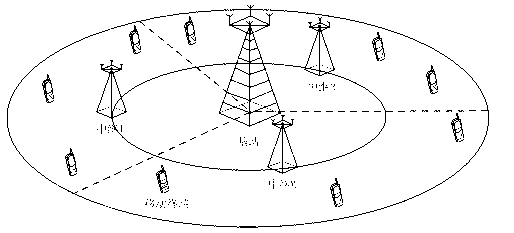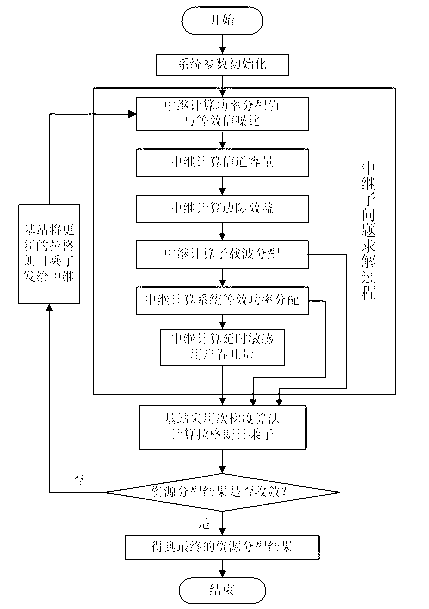Distributed resource distribution method for multiple input multiple output (MIMO)-orthogonal frequency division multiple access (OFDMA) wireless relay system
A MIMO-OFDMA, distributed resource technology, applied in the field of wireless communication, can solve problems such as frequency selective fading, and achieve the effect of reducing the amount of calculation
- Summary
- Abstract
- Description
- Claims
- Application Information
AI Technical Summary
Problems solved by technology
Method used
Image
Examples
Embodiment Construction
[0013] The distributed resource allocation method of the MIMO-OFDMA wireless relay system proposed by the present invention is described in detail as follows with reference to the accompanying drawings.
[0014] The MIMO-OFDMA wireless relay system to which the present invention is applicable is as figure 1 As shown, the system has a base station, and M relays are evenly deployed at the cell edge of the base station, and are respectively responsible for several user terminals in their respective sectors. All K users access the system in OFDMA multiple access mode, and can communicate only through relay assistance, and some of them are delay-sensitive users (k∈D m ), the rest are non-delay-sensitive users (D m Denotes the delay-sensitive user set, U m represents the entire set of users). The system contains n F subcarriers, and each entity uses N antennas to transmit and receive signals.
[0015] The present invention dynamically selects the following relay forwarding ...
PUM
 Login to View More
Login to View More Abstract
Description
Claims
Application Information
 Login to View More
Login to View More - R&D
- Intellectual Property
- Life Sciences
- Materials
- Tech Scout
- Unparalleled Data Quality
- Higher Quality Content
- 60% Fewer Hallucinations
Browse by: Latest US Patents, China's latest patents, Technical Efficacy Thesaurus, Application Domain, Technology Topic, Popular Technical Reports.
© 2025 PatSnap. All rights reserved.Legal|Privacy policy|Modern Slavery Act Transparency Statement|Sitemap|About US| Contact US: help@patsnap.com



